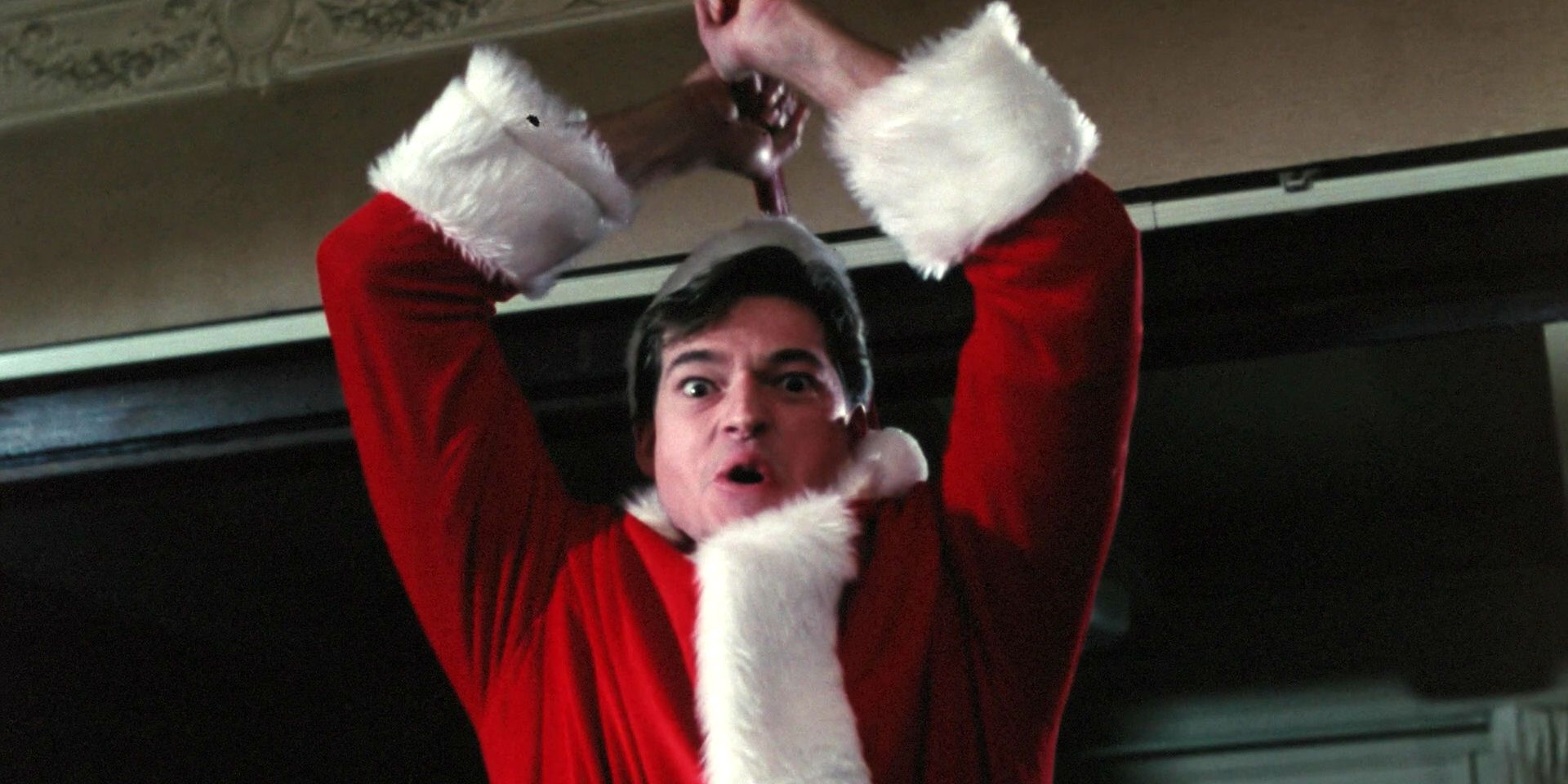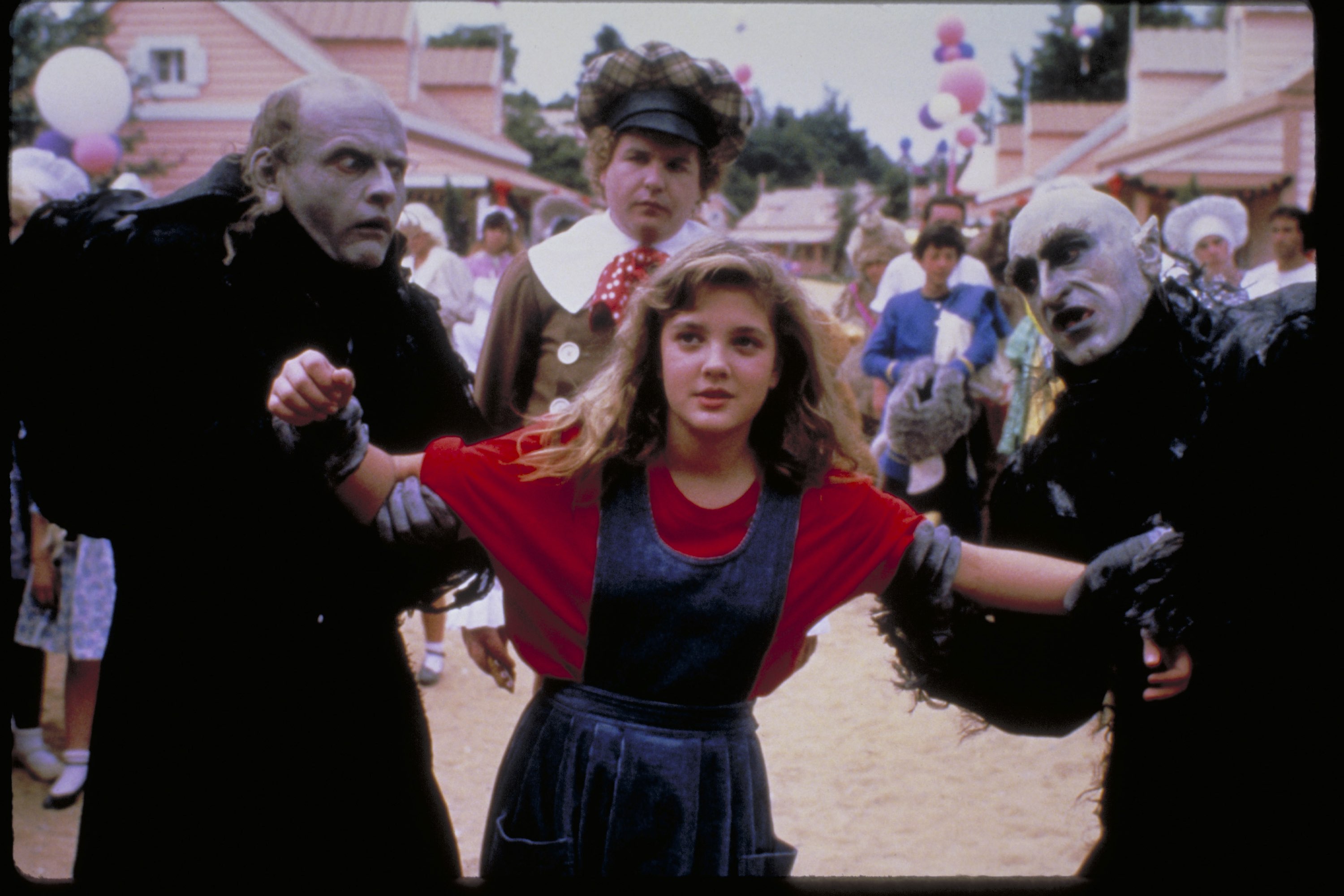Me, I Want a Hula Hoop (original) (raw)

A Chipmunk Christmas – From 1981, this was part of an effort by Ross Bagdasarian Jr., son of the late creator of the Chipmunks, to revive the property, a few years before the Alvin and the Chipmunks cartoon series that I remember from my childhood. As such, the style shows somewhat of a transition from the simpler designs of The Alvin Show from the early sixties and the later show, which was brighter and bolder. It also includes an appearance by Clyde Crashcup, an eccentric inventor who makes things that already exist and messes them up anyway, whose segments were a regular part of the earlier show. I don’t think he ever intersected with the Chipmunks, though, and here he shows up in Alvin’s dream.
Beth mentioned that he sounded like the Caterpillar from Disney’s Alice in Wonderland, which makes sense as his voice is an imitation of Richard Haydn, who voiced that character. The special starts with a terminally ill child, then switches to the three Chipmunks all riding the same skateboard down a surprisingly long bannister, and trying to get Dave to take them Christmas shopping.
Alvin overhears the sick boy’s sister saying that he really wants a harmonica like Alvin’s, so the red-clad Chipmunk gives the kid his, which was presumably one of only two ever made. I hope he cleaned it first. Regardless, Alvin is afraid to tell Dave, who gave him the harmonica in the first place. So he tries to make money, which just makes Dave think he’s being greedy. This would have been a lot shorter if he’d just explained what happened, especially as Dave is proud of Alvin once he learns about it. From what I remember, it’s rare for what Alvin is trying to cover up to be a GOOD thing. It becomes an even bigger problem when there’s an offer for the Chipmunks to play Carnegie Hall that night, with a special request for Alvin to play harmonica. I didn’t really think that was a venue that booked acts on the spur of the moment like that. And do the Chipmunks live near New York? They didn’t have to take a plane or anything, and the local kid gets to go on stage with them. And Mrs. Claus gives Alvin the other harmonica.
It’s very much centered around him, with Simon and Theodore not getting their own subplots or anything. I guess getting a musical instrument from a rock star will cure whatever unspecified disease he had. It’s kind of a dark premise for what’s mostly just a cartoon about singing rodents goofing around. I know dying kids are a Christmas media tradition, but paired with novelty music?
Care Bears Nutcracker Suite – I understand that this was originally supposed to be a theatrical release, but it ended up being direct to video instead. It’s only about an hour long, but it still feels like kind of a drag. It’s a retelling of the story of the Nutcracker with the Care Bears mixed in. The Bears find out that a girl named Anna is sad, so Funshine and Grumpy visit her to try to cheer her up. While there, a nutcracker comes out of a portal, followed by some giant mice in what I guess are World War I German helmets.
In response to a request for reinforcements, Tenderheart Bear, Brave Heart Lion, and Lotsa Heart Elephant also show up, and they all go through the portal to Toyland. Anna’s little brother sneaks in after them, along with Hugs and Tugs.
He’s not cracking any nuts with that jaw.
Toyland has been taken over by an evil vizier who has enchanted the prince (one guess as to what happened to him) and imprisoned the Sugar Plum Fairy.
He’s basically a proto-Jafar.
There are bits of music from the Nutcracker Suite throughout, a fair amount of bears zapping people with their bellies, and a train that runs on strawberry soda, but none of this is enough to make the special compelling.
I do wonder why Grumpy seems to handle most of the manual labor. At the end, Anna finds out that it was a dream, and meets her new neighbor who looks just like the Nutcracker. Does that mean she also didn’t really meet the Care Bears? The dream ending is part of the traditional story, but I don’t know that it’s necessary in a universe where magical bears live in the clouds and routinely visit depressed people.

Moral Orel: The Best Christmas Ever – Neither of us had seen this show before, but Beth saw someone online say that this episode was one of her favorite holiday specials. Running from 2005 through 2008 on Cartoon Network, it’s a satirical stop-motion program about a highly dysfunctional family, with Morel being an optimistic and devoutly religious kid who tends to misunderstand the tenets of his faith. He looks and acts like Davey from Davey and Goliath, but I understand the creator said that wasn’t really an influence. In this one, Orel decides that his little brother Shapey, a maladjusted and barely verbal brat whom the father actively dislikes (partially because he knows he isn’t really his son, despite his wife lying about it), is the second coming of Christ, leading him to help Shapey to dismantle a nativity scene. It’s pretty funny, with one good joke I remember being a religious song turning out to be a pizza commercial. Apparently the show was canceled because the humor was just too dark and bleak.

Silent Night, Deadly Night Part 2 – We watched the original movie some years ago, and I don’t think I wrote about it. Not that it really matters, because about a third of this movie is stock footage from that one. It’s presented as the brother of the original killer, who’s been institutionalized, telling the story to a psychologist. How he can include stuff he didn’t witness and has no way of knowing about, I couldn’t say. Once we do get to the brother’s story after the plot of Part 1, it’s really pretty similar. He’s triggered by the sight of Santa Claus or nuns to punish anyone he thinks is naughty to the point of killing them, even his girlfriend. There isn’t even a holiday theme to most of it. One ridiculously brutal bit has him hooking a guy up to a car battery. After this, he goes on a shooting spree without even being concerned about the naughtiness thing anymore. Part of this has become a meme, not one I’ve come across in the wild, but it came up at the latest Kevin Geeks Out. While on his spree, the killer sees a random guy taking out his trash, and yells, “Garbage day!” before shooting him.
This was even referenced in Shudder’s blurb on the movie. It feels like someone wanted to make a sequel but had barely any ideas, so they just regurgitated the original. There are somehow three more films in this series, although it looks like only Part 3 has any relation to the same story or characters.

A Wish for Wings That Work – I can’t say I was ever particularly familiar with Bloom County (or Outland, originally intended to be a separate strip, but that gradually just became the same thing). I remember reading it occasionally in the newspaper, but didn’t really have that much of a sense as to what it was about, except that it had talking animals commenting on contemporary politics. Kind of like Pogo, I guess, although creator Berkeley Breathed denied that the earlier strip was an influence. And Bill the Cat was kind of a disturbing character. But I don’t think it was even necessary to know the strip, as this particular special was based on a children’s book by Breathed, which used the comic’s characters but seems to have been largely its own thing otherwise. This cartoon was surprisingly well-animated, very crisp in its look despite the rough character designs.
It also has uncredited voice work by Robin Williams and Dustin Hoffman, and incorporates footage from the film Lost Horizon.
Opus the Penguin really wants to be able to fly, and makes desperate attempts to do so, as well as joining a support group for flightless birds. When he finds out that Santa has fallen into a nearby lake, he uses his aquatic skills to rescue the gift giver, and is rewarded by a flock of ducks who give him a ride through the air. I thought it was pretty good, with some funny lines, but not especially memorable. So maybe that’s why it was never particularly successful, and why Breathed more or less disowned it.

Babes in Toyland (1986) – We’ve now watched four movie versions of this story, and I can’t say any of them really grabbed me, even though I like the general premise of a community of toys and nursery rhyme characters. I should watch a better transfer of the Laurel and Hardy one, though. But anyway, I remember seeing this made-for-television movie, or at least part of it, as a kid. I’m not sure whether that was the first airing or a later one. It stars an eleven-year-old Drew Barrymore as Lisa Piper, a little girl who has basically been forced into growing up prematurely because her mom isn’t around much of the time. Her sister Mary works at a toy store with her friends Jack, played by Keanu Reeves, and George; and the boss sexually harasses her AND tries to keep all the employees there when a massive blizzard is on the way. All three of them quit and drive home with Lisa, all of them singing a song about Cincinnati. Lisa falls out of the car on her new sled and is knocked unconscious, with the main part of the movie being her dream and all the people from the real-life sequence becoming characters in it. Her sister is Mary Quite Contrary, their mom is the absent-minded Mother Hubbard who can’t remember the names of all her kids, Keanu is Jack B. Nimble, George is Georgie Porgie, and the abusive boss is the villainous Barnaby (here called Barnaby Barnacle, not Silas Barnaby). It’s very Wizard of Oz, but since the original 1903 operetta was an attempt by Fred R. Hamlin and Julian Mitchell to follow up on their success with the stage version of Wizard, that’s essentially part of Toyland’s legacy. I did notice that Jack and Mary didn’t do any candlestick jumping or gardening, at least not that I recall. I wondered if there was some significance to the last name Piper, and there sort of is because Peter Piper is one of Mary’s many siblings, but it’s never addressed beyond that. It seems to be consistent among versions of this story that Barnaby is trying to marry a much younger nursery rhyme character who’s in love with one of her peers, but which ones varies. Toyland itself looks like an old amusement park, very bright and colorful with costumed characters and people riding around in cute toy cars, but it doesn’t feel particularly real, and the inhabitants seem pretty indifferent to most of what’s going on.
Some of that is probably the limitations of the masks, but I’ve seen much better pantomime. It’s also said to be completely surrounded by an evil forest everyone avoids, so does that mean it’s an entirely self-sufficient society? Georgie tells Lisa that Barnaby lives in a giant bowling ball (one part I definitely remember from watching this as a kid), and that he sometimes rolls it into the street and knocks people over. So he commits assault and no one does anything about it? It’s also later shown that it contains a trapdoor leading to a chute into the forest, so is that just left behind when it rolls around? Also, why introduce an idea that sounds visually interesting and not show it?
That also makes me wonder why the town magistrate is willing to arrest Jack when Barnaby frames him for destroying a bunch of cookies at the factory entirely on the word of the very openly evil dude. He is rich, I suppose, but they don’t even make a big deal of that in this version. Barnaby has two henchmen named Zack and Mack, who are very slapstick, complete with cartoonish sound effects that aren’t used for anyone else. He also has a bird with one eye that can show anything he wants.
The four protagonists go to see the Toymaster, played by Pat Morita in what seems to be a take on his role in The Karate Kid. He doesn’t do martial arts, but he’s a guy who seems goofy and harmless but has a lot of hidden wisdom. Barnaby steals his flask of evil, which, as Jay Davis explained, is actually a holdover from the original stage show.
There, however, the Toymaker was a villain who used it to make evil toys, while here he just uses it to keep the evil contained, and it’s Barnaby who uses it to make an army of trolls who look like piles of rags. The Toymaster says that he can’t help unless Lisa truly believes in the power of toys, which she doesn’t because she’s grown up too fast. Never mind that this was presented as something she pretty much had to do because of her family life, not any lack of childish wonder on her part. And even if you do accept this as a valid conflict, it’s resolved pretty much immediately. A bunch of giant wooden soldiers drive off the trolls, Barnaby is banished from Toyland, and the Toymaster is revealed to also be Santa. When Lisa wakes up, it remains true to MGM Oz in that there’s absolutely no resolution as to what happened with the abusive boss, nor is the fact that Mary no longer has a job addressed. I think there was some definite effort put into this in some respects, but it’s kind of sterile and pretty sloppy as far as the plot goes. While there’s very little of the Victor Herbert score, the new songs are decent enough; the writer, Leslie Bricusse, also worked on Willy Wonka and the Chocolate Factory. I do have to wonder if that Cincinnati song was originally intended for some other project, as it’s totally irrelevant to the plot, but a few references to the city are shoehorned in at various times, like Barnaby regularly calling Lisa “Cinci-whatski.” And several plot points are introduced and dropped, like Lisa’s attempt to hook up Mother Hubbard and Barnaby, which is disturbing considering who these people are in her real life.